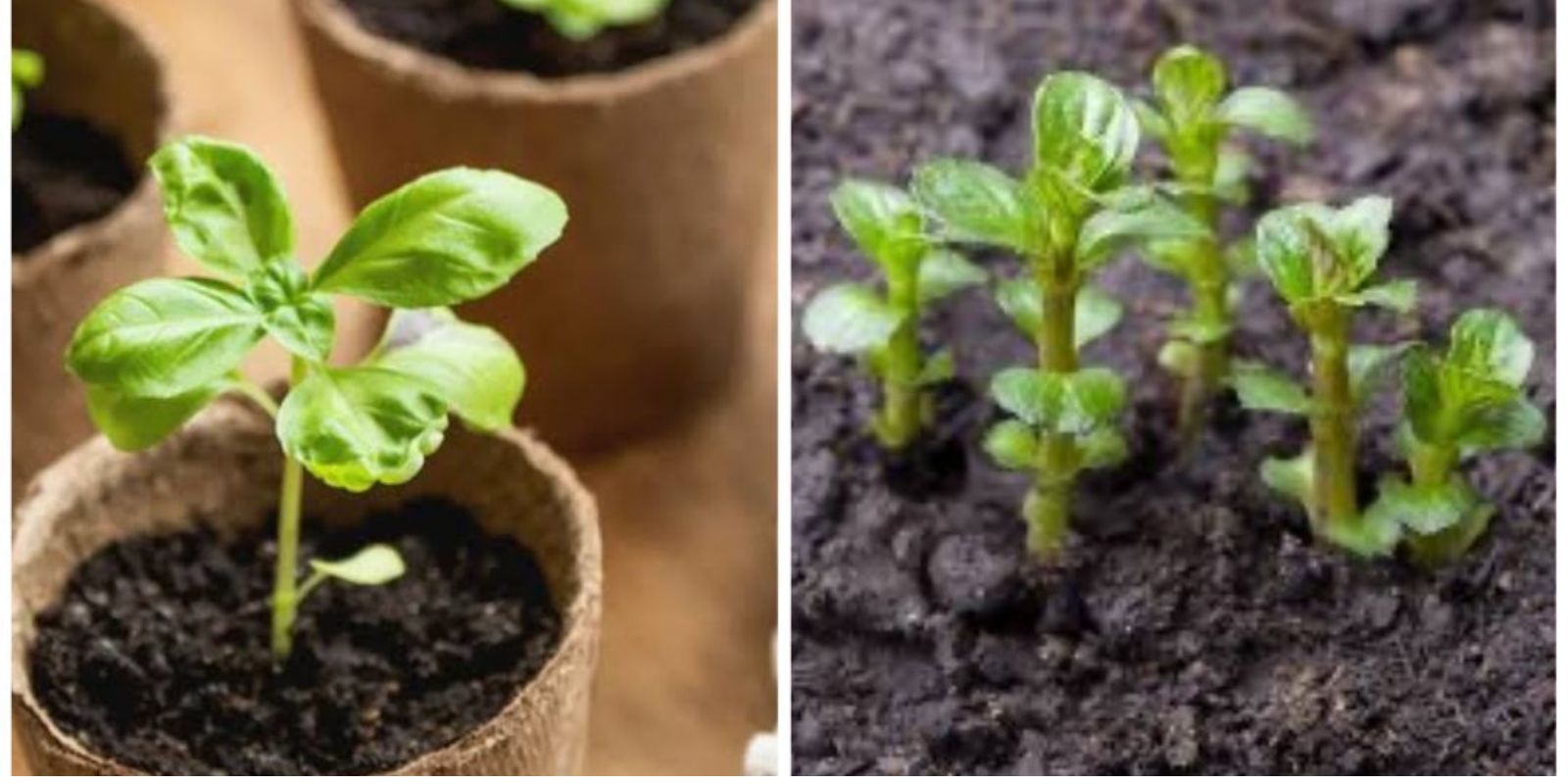When it comes to gardening, winter often feels like a dormant period. However, January and February are perfect months to start sowing a variety of herbs indoors or in protected environments. By getting an early start, you’ll enjoy a thriving herb garden by spring, and fresh, homegrown flavors all year long. This guide will walk you through the top nine herbs to sow in late winter, how to plant them successfully, and tips for nurturing them as they grow.
Why Start Herbs in Winter?
Starting herbs in January or February gives you a head start on the growing season. The cooler months allow seeds to germinate slowly and steadily, resulting in stronger, more resilient plants. Additionally, many herbs can be grown indoors with minimal space and effort, making it an excellent activity for both seasoned gardeners and beginners.
The 9 Herbs to Grow This Winter
Here’s a breakdown of the best herbs to sow in January or February, their benefits, and tips for planting:
1. Basil
- Why Grow It? A versatile herb essential in Italian, Thai, and Mediterranean dishes. Basil is a fast-growing plant that thrives indoors during the winter.
- How to Sow: Plant seeds 1/4 inch deep in a pot with well-draining soil. Place the pot on a sunny windowsill or under grow lights.
- Tips: Pinch off the top leaves regularly to encourage bushier growth.
2. Parsley
- Why Grow It? Packed with vitamins and antioxidants, parsley adds a burst of flavor to soups, salads, and sauces.
- How to Sow: Soak seeds overnight to speed up germination, then plant them about 1/4 inch deep. Keep the soil moist but not soggy.
- Tips: Parsley can take up to three weeks to germinate, so be patient!
3. Dill
- Why Grow It? Known for its feathery leaves and unique taste, dill is perfect for pickling, dressings, and fish dishes.
- How to Sow: Sow seeds directly into pots or trays filled with loose, fertile soil. Dill needs a lot of sunlight, so place it in a sunny spot.
- Tips: Dill has deep roots, so ensure containers are deep enough.
4. Cilantro
- Why Grow It? A staple in Mexican, Indian, and Middle Eastern cuisine, cilantro’s tangy leaves and seeds (coriander) are highly versatile.
- How to Sow: Plant seeds about 1/2 inch deep in rich, moist soil. Cilantro prefers cooler temperatures, making winter ideal.
- Tips: Harvest leaves regularly to prevent bolting (going to seed).
5. Thyme
- Why Grow It? Thyme’s earthy flavor complements roasted vegetables, meats, and stews. Plus, it’s highly drought-tolerant.
- How to Sow: Scatter seeds on the surface of the soil and press them in lightly. Thyme requires sunlight and well-draining soil.
- Tips: Thyme grows slowly, so start early to give it time to establish.
6. Sage
- Why Grow It? With its robust, slightly peppery flavor, sage is a must-have for seasoning meats and stuffing.
- How to Sow: Plant seeds 1/8 inch deep in sandy, well-draining soil. Sage needs good airflow and plenty of light.
- Tips: Sage is a perennial herb that can grow for years with proper care.
7. Oregano
- Why Grow It? A Mediterranean favorite, oregano adds a warm, aromatic flavor to pizzas, pastas, and more.
- How to Sow: Sow seeds on the soil surface and lightly press them in without covering completely. Oregano needs plenty of sunlight.
- Tips: Prune regularly to encourage bushy growth and prevent legginess.
8. Chives
- Why Grow It? Chives are a mild onion-flavored herb perfect for garnishing soups, omelets, and potatoes.
- How to Sow: Plant seeds about 1/4 inch deep in moist soil. Chives do well in small pots on sunny windowsills.
- Tips: Trim often to encourage new growth and prevent flowering.
9. Mint
- Why Grow It? Mint is a refreshing herb ideal for teas, desserts, and cocktails. Its aroma also repels pests.
- How to Sow: Mint grows best from cuttings, but you can also sow seeds 1/4 inch deep. Use a container to prevent it from spreading uncontrollably.
- Tips: Keep the soil consistently moist but avoid waterlogging.
Step-by-Step Guide to Sowing Herbs Indoors
- Gather Supplies: You’ll need seed trays or pots, seed-starting soil, seeds, and labels.
- Prepare Containers: Ensure pots have drainage holes. Fill them with loose, nutrient-rich soil.
- Sow Seeds: Follow the depth recommendations for each herb. Cover lightly with soil if required.
- Water Carefully: Mist the soil gently to avoid disturbing the seeds. Keep the soil moist but not waterlogged.
- Provide Light: Place containers in a sunny location or use grow lights for 12–16 hours daily.
- Maintain Temperature: Most herbs germinate well at 65–75°F. Use a heating mat if necessary.
- Thin Seedlings: Once seedlings appear, thin them to give each plant enough space to grow.
- Fertilize Sparingly: Use a diluted, all-purpose fertilizer every 2–3 weeks to support growth.
Common Challenges and Solutions
- Slow Germination: Herbs like parsley and thyme take longer to sprout. Be patient and maintain consistent moisture.
- Leggy Seedlings: Lack of light can cause plants to grow tall and weak. Adjust the light source closer to the plants.
- Overwatering: Too much water can lead to root rot. Allow the top inch of soil to dry out before watering again.
Transitioning Herbs Outdoors
As the weather warms up, your herbs can be transplanted to your garden or larger pots outdoors. Gradually acclimate them to outdoor conditions by placing them outside for a few hours each day over a week.
Benefits of Growing Herbs in Winter
- Fresh herbs on hand for cooking and teas.
- Cost savings compared to store-bought herbs.
- A rewarding hobby that reduces stress.
- Enhanced air quality in your home.
💬 Which herb are you most excited to grow this winter? Share your gardening tips in the comments!

